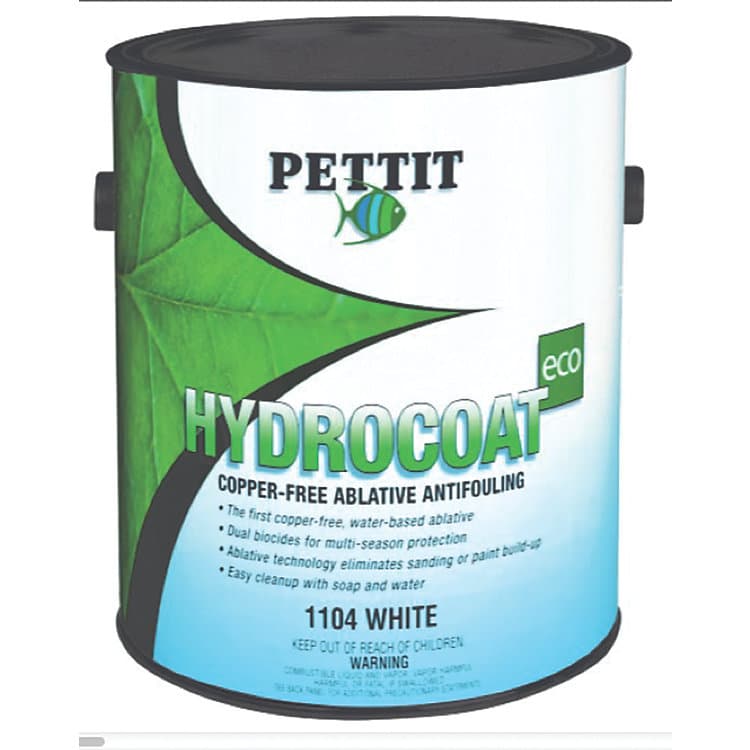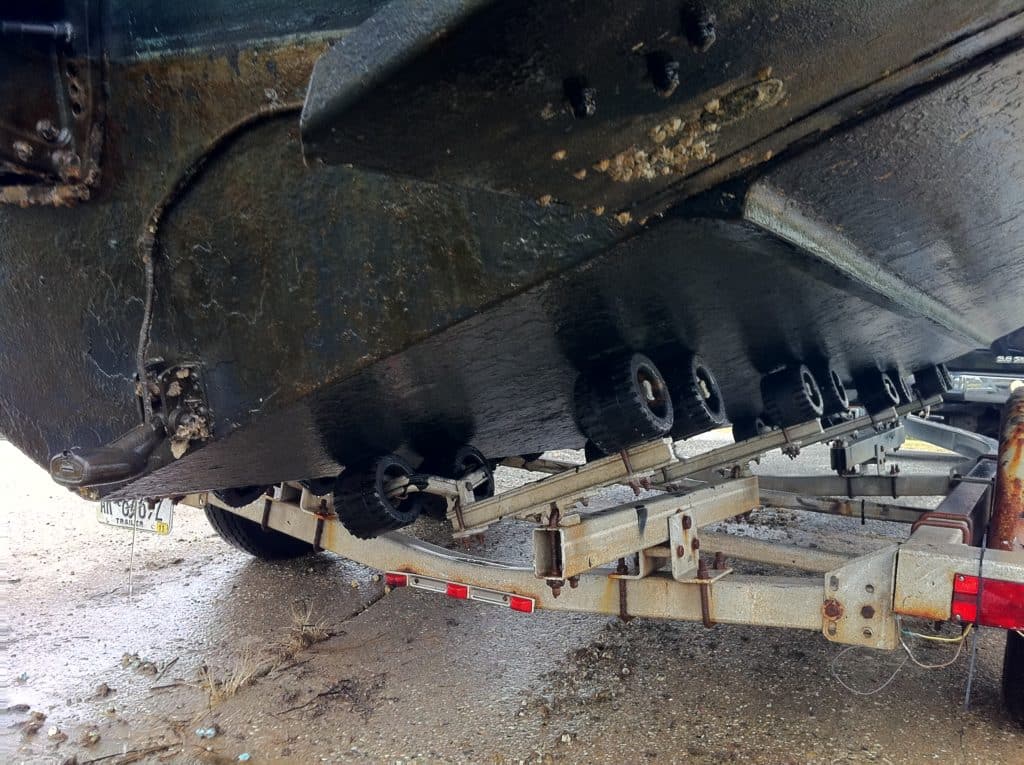I coated the bottom of my boat with Pettit Hydrocoat Eco for the 2015 and 2016 boating seasons.

Its a multi-season paint, specifically, Hydrocoat ECO is a, ” self-polishing ablative copolymer.” In this post I’ll report on the results of that use, but first some background information may be in order.
Click Here To Read Part One: Application of the paint.
Hydrocoat Eco contains no metals, such as copper, and instead relies upon dual biocides to keep plant and animal fouling at bay. The biocide, ECONEA, along with a slime inhibitor do the dirty work. Additionally, there are no noxious solvents. Like the lack of metals, this makes it more environmentally-friendly and also more user friendly, as you can read about in Part One.
Complete Pettit Hydrocoat ECO specs
Since no discussion of fouling –and the effectiveness of antifouling coatings–can be valid without some data points regarding the location, boat type, and boat use, here is a sketch of those parameters for my boat. Things such as season length, frequency of use, water temperature, pollution levels, amount of exposure to sunlight, and more all affect how much fouling will occur, and how effective an anitfouling coating will be. So, for the record, my boat is a planing power boat, kept in saltwater for 8 months of the year, in an uncovered slip, in the Northeast US. The boat gets used three times per week on average. The water is clean, but both agricultural and residential runoff result in high nitrogen levels and thus, fecund plant fouling growth. Shell fouling is moderate, so overall, and unscientifically, I’d rate my fouling challenge as “medium to high.”

The Bottom Of The Author’s Boat
During the first season, I dove on the boat monthly ( when we were anchored or at the beach or pursuing watersports) using a mask and snorkel and was happy to report that I did not need to scrub off fouling prior to haul out, except at the 5 month mark and then only on the transom. It should be noted that transoms will always suffer bit more fouling than the bottom, because of the lack of “washing action” that occurs there as the boat moves through the water. As a result, I always add an additional coat to my transom because I know I may need to scrub it. Ditto for the area between the chine and the bootstripe. I usually scrub the brown scum from the hull, and in so doing, end up scrubbing the bottom paint at the waterline. An extra coat here ensures I don’t scrub away protection.
Scrubbing, in this sense, means the light use of a soft-bristle brush or a sponge.
At the end of the first season, I hauled the boat and noticed very little fouling at all and just a minimal layer of slime. This is as good performance as I have achieved with a bottom paint, even going back to the days of using heavy tin- or copper-laden hard paints. I have been keeping a boat in these same waters with more or less the same frequency of usage for nearly 40 years, so I have enough experience to make this admittedly anecdotal judgement.
I pressure washed the boat and stored it for the winter. Next, spring, other than adding a coat to my boat’s transom and waterline as explained above, I simply gave the bottom a rinse with a hose and launched for the season. I achieved the same good results as in season one.
Frankly, its wonderful that Hydrocoat ECO provides such great fouling protection while being more environmentally-friendly than most paints, and more pleasant to use, as a result of the lack of fumes and easy, water cleanup.









